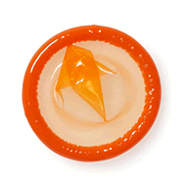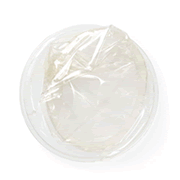To shave or not to shave?
Taking it all off? Or just some of it? If you’re grooming down there, here are tips to keep it safe.

A recent study made major headlines by showing a possible link between pubic hair grooming and sexually transmitted infections (STIs). People who shaved, waxed, or trimmed a lot were more likely to have had an STI than those who left their pubic hair au natural or even those who touched it up once in a while. The researchers couldn’t say for sure whether pubic hair grooming caused the bump in STIs, since they didn’t ask about condom use, what kind of sex people had, or which came first—grooming or the STI. But common sense says that pubic hair has a purpose—so if you’re going to shave it or shape it, make sure you’re safe about it.
Stylin’ pubes through the ages
Like high-waisted jeans and big glasses, pubic hair fashion seems to come and go. While it’s harder to track a trend that is usually hidden under layers of clothing, we know some things about what was in style and when.
Women in the U.S. weren’t likely to take off body hair until after Gillette introduced a razor for women—the fancifully named Milady Décolletée—in 1914. In the 1940s during World War II, there was a shortage of nylon for stockings and leg shaving became more popular. Shaved bikini areas were likely born at the same time as the bikini itself, in the mid-1940s.
The pubic pendulum swung back in a hairier direction in the 1960s and ‘70s as the sexual revolution embraced free love and the natural state of things. But just a couple of decades later, Brazilians became the buzz word. After they were made famous by Sex and the City, suddenly it seemed that everyone agreed waxing was painful but necessary.
Where we are now is not quite clear. According to The New York Times and Gwyneth Paltrow, bushy pubes have made a comeback. Yet studies from 2013 and 2014 showed that a majority of U.S. women (84%) and men (66%) groom their pubes somehow.
The ups and downs of pubic grooming
Reducing or removing pubes can be nice for increased sensation, the trend toward less hair may possibly be causing a decline in cases of pubic lice, and many people just like the way it looks. On the flip side, it’s common sense that pubic hair is meant to protect the delicate skin of the genitals, so removing it may also take away a layer of protection.
How we take off pubic hair can make difference. A study found that emergency room visits caused by cuts, burns, and scrapes to the genitals went up five-fold between 2002 and 2010, accounting for about 3% of all genital injuries. Razors seemed the most dangerous for both men and women, with 72% of male injuries and 89% of female injuries caused by the manual version of this shaving tool. Electric razors are safer, causing only 3% of accidents in men and 2% in women. Men had a more trouble with scissors than women (25% compared to 13% of injuries). In contrast, hot wax, which sounds dangerous, caused no accidents in men and just 2% in women. These are only the injuries that were bad enough to send someone to the emergency room—there were probably many more that went unreported.
This doesn’t mean that you should never shave, trim, wax, or laser—you should have as much control over your pubic hair style as you do over the hair on your head. Leave it all, take it all, or create a nifty design. It’s perfectly healthy to keep your pubic hair, and it’s also fine to remove it. You do you!
Advice for safer trimming, shaving, waxing, and laser hair removal
So how can you shape the pubes you want with the least amount of downside? The basic methods for pubic hair grooming are trimming, shaving, waxing, and laser hair removal. The choice is yours, but there is an argument to be made that the less you take off, the less likely you are to damage the skin of your genitals. Other things to consider as you’re choosing your technique are:
Frequency: Shaved hair grows back faster than waxed, so you’d have to commit to doing it more often.
Pain: Trimming is pain-free as long as you don’t cut yourself, waxing is not.
Cost: Laser hair removal can cost upwards of $200 per session, and one session is never enough.
Reaction: You’ll want to take into account how your skin feels afterwards. Eg. Some people are prone to ingrown hairs from shaving but find waxing is fine.
Tips and tricks
Whatever technique you choose, there are things you can do to make it work better.
Just add water. If you’re shaving, consider soaking in a warm tub or taking a long shower first. Always run the razor in the direction the hair is growing to reduce cuts.
Test first. If you want to try a hair-removal cream (called a depilatory), make sure it says it’s safe for bikini areas first. Then try it on a small patch of skin to make sure you don’t have a reaction.
Let it be. Those who are waxing should not shave beforehand. You need the hair to be long enough to be pulled and you don’t want the skin to be irritated before the wax goes on. Same goes for anyone doing laser hair removal.
Stay in the shade. For laser hair removal, you should also avoid prolonged sun exposure for six weeks before and after the treatment.
Plan ahead. It’s best not to shave or wax too soon before sex. For one thing, your skin may be a little irritated right after hair removal, no matter what method you use. Give your skin at least a day to calm down.
Tools
If you’re doing it yourself, you’ll need a good set of tools.
Trimming: For trimming, you should have a good pair of sharp scissors that are the right size for the job. You could also invest in an electric beard trimmer to reduce nicks.
Shaving: Shaving requires a fresh, sharp razor blade and some good shaving cream or gel. And anyone who is going the DIY route could benefit from a hand-held mirror.
Waxing: If you’re heading to a salon for waxing, make sure they’re using the best tools, too. The wax shouldn’t be too hot, the table should have a fresh sheet of paper rolled out, and they absolutely have to use a new wooden stick every time they dip into the hot wax.
Technicians
Hair removal is big business, with everywhere from the nail salon on the corner to the fancy hotel spa cashing in. Whether it’s waxing or laser hair removal, check the place out and see if you can meet the technician in advance. Trust your gut on whether the environment is sanitary and the technician is competent, and don’t be afraid to walk out if you get a bad vibe. If you want laser hair removal, you really should find a board-certified dermatologist. (It is a laser, after all.)
Taking care
Applying some baby oil or a gentle lotion with aloe after you remove the hair can feel soothing and help your skin heal. Stay away from anything scented or perfumed—those are never good for your genitals.
Finally, despite the sensational headlines, when it comes to STIs, whether you used a razor or hot wax before sex matters a hell of a lot less than whether you use a condom during it. Take care down there, get tested on the regular, and use condoms to stay on top of your sexual health and happiness.
How do you feel about this article?

Heat up your weekends with our best sex tips and so much more.

